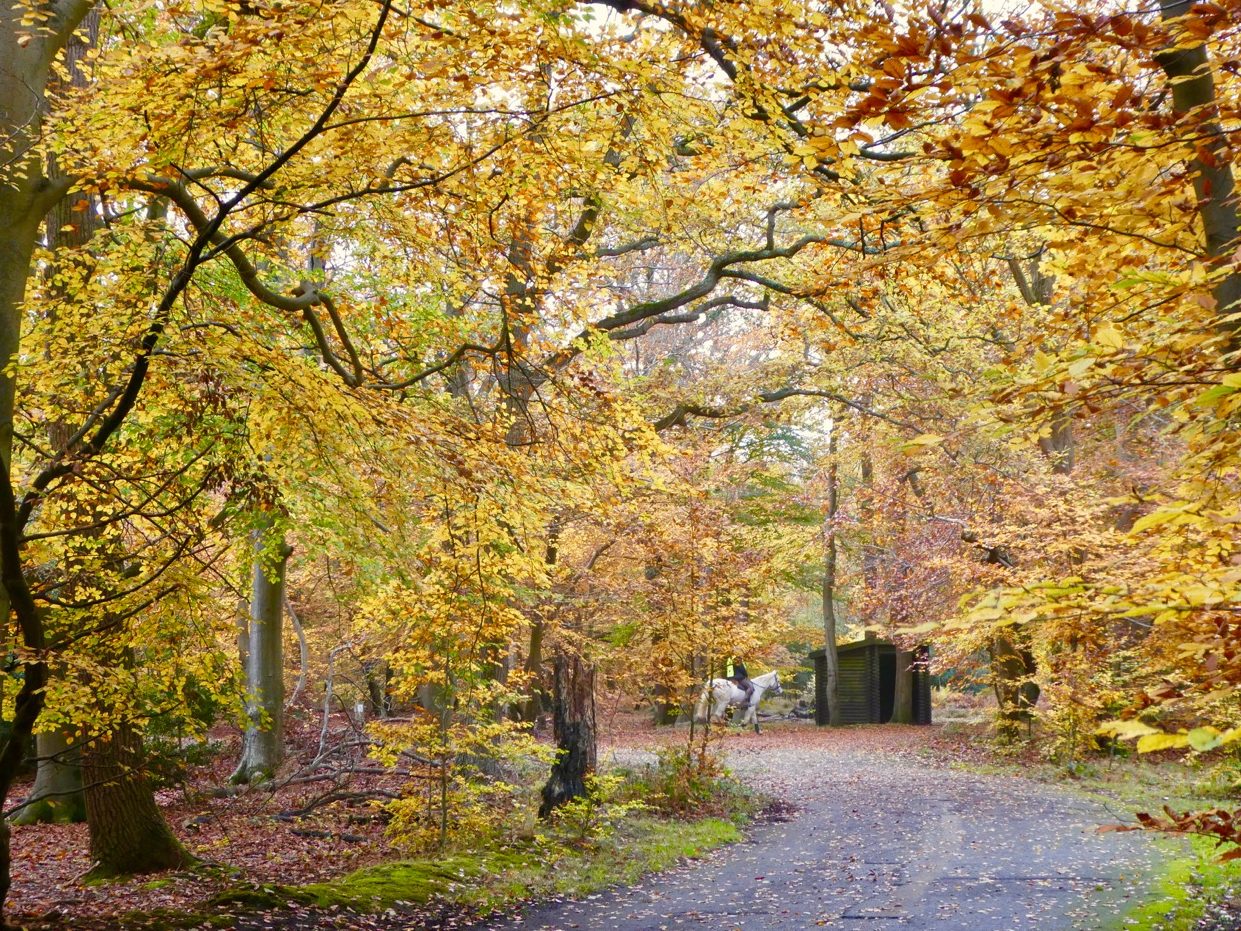
Currently there’s usually one dry day a week, and I squeeze an autumnal ride in then if free. Today was a corker; everywhere drenched in vibrant russets and golds from West Drayton to Beaconsfield via Langley and Black Parks and Burnham Beeches. Previously, greener rides through the amazing giant conifers of Havering-Atte-Bower and the Kentish Weald of Chartwell, Hever and Chiddingstone brought equal pleasures.
Kent first, and a revisit to the western section of Spinoff 5, but with some diversionary investigation now that the C25 system is in place. I started beyond the North Downs at Oxted and set off direct for Chartwell (NT), discovering a neat cycleable bridleway at Crockham Hill, keeping a-contour and  avoiding a sudden pitch down and back up the greensand ridge. After that, another shortcut for bikes only on the private road through Froghole – and there in the last field, a solitary ostrich grazing. Llama and alpaca are two-a-penny these days – I encountered a few shortly after – but that was a first for me.
avoiding a sudden pitch down and back up the greensand ridge. After that, another shortcut for bikes only on the private road through Froghole – and there in the last field, a solitary ostrich grazing. Llama and alpaca are two-a-penny these days – I encountered a few shortly after – but that was a first for me.
The offroad mile ride from Hever to Chiddingstone is a precious section. Its status is uncertain, though most of it is an old metalled road, and featured a wooden bridge for a parallel footpath. Sadly I discovered it has been removed, presumably rotted. If the Hever estate established this as a cycleable byway, then three wonderful tourist centres – Penshurst, Chiddingstone and Hever – would be velo-connected. I picnicked on a curving bench round an oak overlooking the lovely Eden valley.
Last week it was Essex, and a short ten miles from Brentwood to Romford via Weald Country Park  and Havering-Atte-Bower – a rural ride to confound any prejudices about that county. Weald Park is a wilder Richmond Park, full of deer in an undulating landscape.
and Havering-Atte-Bower – a rural ride to confound any prejudices about that county. Weald Park is a wilder Richmond Park, full of deer in an undulating landscape.
It is far from flat from there to Havering-Atte-Bower, a royal hunting estate from 11th to 17th centuries on a hill 300 feet above the Thames estuary. Review your impression of suburban London Borough of Havering here, another country park, where the standout feature is an avenue of Wellingtonia gigantea or Giant Sequoia planted in the 1850’s. Discovered during the Californian Gold Rush, the iconic American tree was cheekily named after the recently deceased Duke in 1853.
Yesterday’s ride was just about catching ‘peak autumn’ – there is perhaps a couple more weeks left – though it was pleasing to find a short section on the Beeches Way upgraded with a hoggin surface in West Drayton. Beeches Way walk largely shadows the C25’s Spoke 8 North.
David says:
Looks good, Martin! Let me know next time you’re heading out.